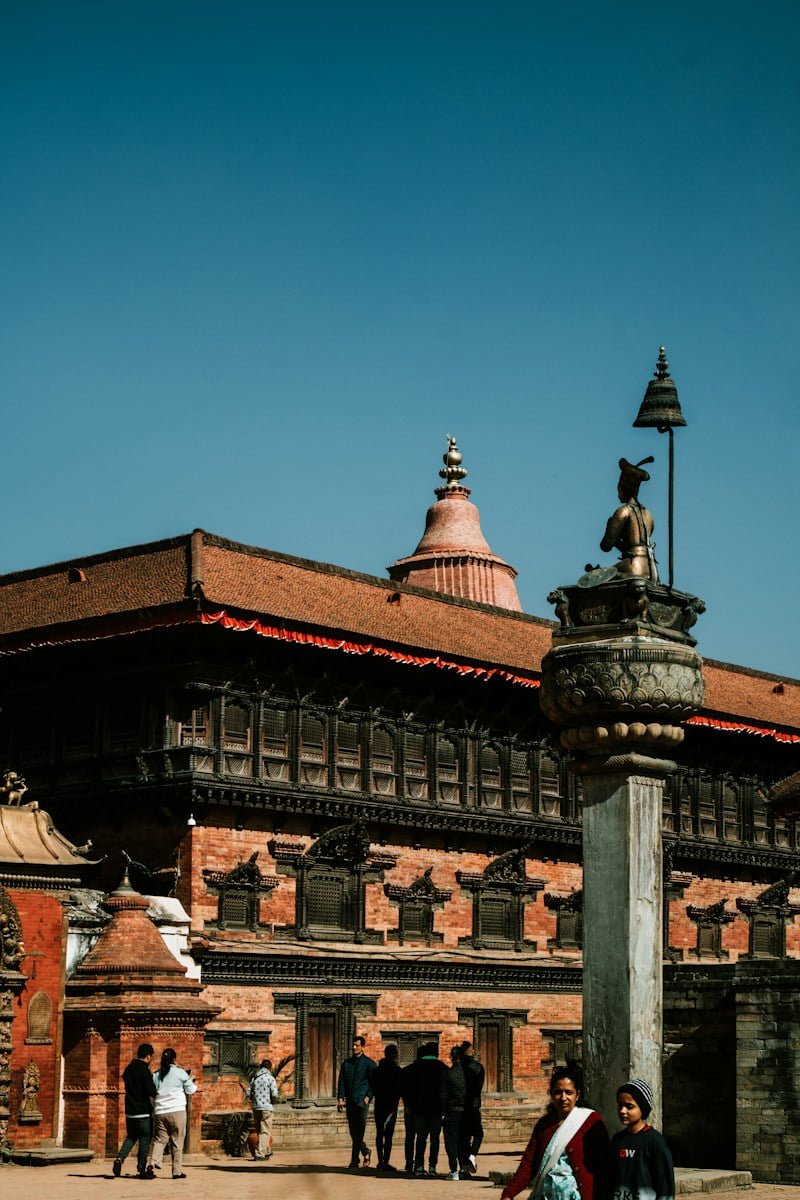A Journey through UNESCO World Heritage Site: Kathmandu Durbar Square
Durbar Square, also known as the royal squares, is a term that refers to the plazas and areas opposite the old royal palaces in Nepal. These squares hold immense historical and cultural significance as they are remnants of the smaller independent kingdoms that existed in Nepal before its unification. Among the prominent Durbar Squares in the Kathmandu Valley, three are particularly famous: Kathmandu Durbar Square, Patan Durbar Square, and Bhaktapur Durbar Square. All three of these sites have been designated as UNESCO World Heritage Sites.
Kathmandu Durbar Square, also known as Basantapur Durbar and Hanuman Dhoka, is located in the heart of old Kathmandu city. This historic square is a testament to the country’s rich history and captivating architecture. It is a site that never fails to impress visitors, with its intricate wood carvings and ancient structures.
The square is home to temples dating back to the third century and has been a center for Buddhist and Hindu rituals, holy ceremonies, royal events, and kingly coronations. Surrounded by fountains, ancient statues, small ponds, and a series of courtyards, such as Mohan Chok and Sundari Chok, Kathmandu Durbar Square exudes a meditative and spiritual ambiance, attracting spiritual seekers from all over the world.
One of the main attractions within the inner complex of Durbar Square is the site of the Old Royal Palaces. These palaces were the residences of the ruling kings of Nepal and hold great historical significance. The architecture of the palaces reflects the artistic brilliance of the Licchavi period (4th to 8th centuries AD), while the extensions made by King Pratap Malla in the 17th century add to the grandeur of the complex.
Unfortunately, the devastating earthquake of 2015 caused significant damage to Durbar Square and its structures. However, efforts have been made to reconstruct and preserve the remaining heritage. Many of the temples and palaces still stand today, offering visitors a glimpse into the glorious past of Nepal.
Exploring Durbar Square is like stepping back in time, as it encapsulates the cultural heritage of Nepal. The square is not only a visual delight but also a place to learn about the country’s history, art, and spirituality. From the ornate carvings adorning the temples to the bustling markets selling traditional crafts and artifacts, Durbar Square is a treasure trove of cultural experiences.
Visiting Durbar Square is an opportunity to immerse oneself in the vibrant atmosphere of Nepal’s ancient kingdoms. The rich history, stunning architecture, and religious significance make it a must-visit destination for anyone interested in the cultural heritage of the country.
Is Kathmandu Durbar Square worth visiting?
Yes, Kathmandu Durbar Square is worth visiting. It is a UNESCO World Heritage Site that holds immense historical and cultural significance, with intricate temples, courtyards, statues, and palaces dating back to the Licchavi period. It is a treasure trove of cultural experiences and a must-visit destination for anyone interested in the cultural heritage of Nepal.
Is Durbar Square free?
The entry to Durbar Square in Kathmandu is not free. For foreigners, the entry fee is typically around 1000 Nepalese rupees. However, for Nepalese nationals, the entry is free. Children below 10 years old also don’t require entry tickets. The ticket usually covers the charge for all attractions except the museums.
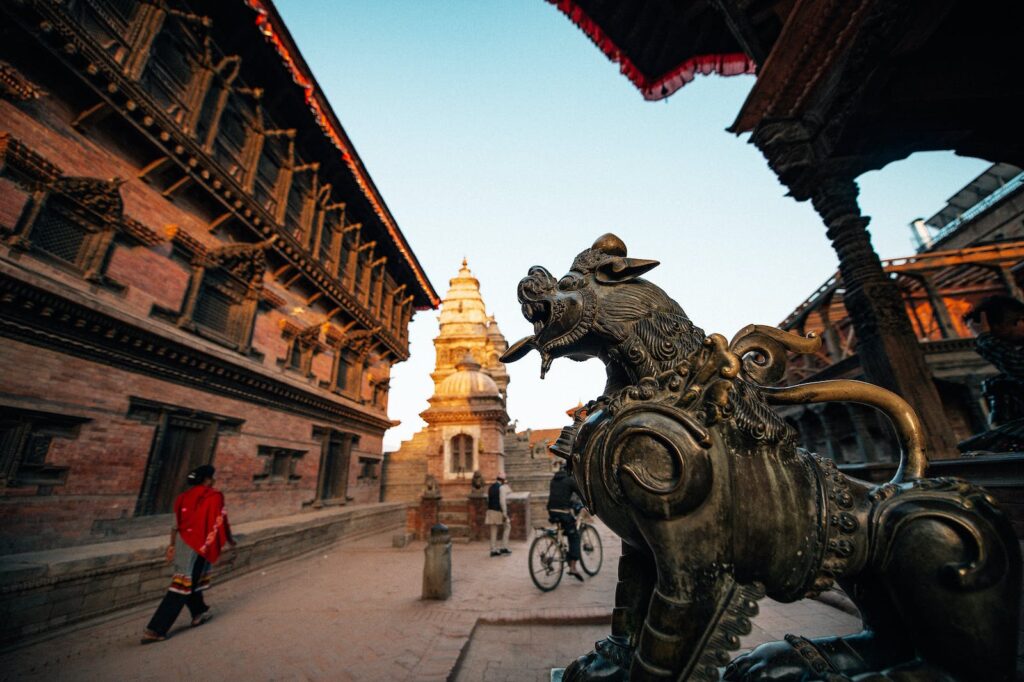
UNESCO World Heritage Site
Kathmandu Durbar Square is famous for its immense historical and cultural significance, as well as its captivating architecture, intricate wood carvings, and ancient structures. It is a UNESCO World Heritage Site and a testament to the rich history, religious diversity, and architectural brilliance of Nepal. The square is a must-visit destination for anyone interested in the cultural heritage of the country
Designated as a UNESCO World Heritage Site in 1979, Kathmandu Durbar Square has been recognized for its outstanding universal value. It is not only a site of historical significance but also a symbol of resilience in the face of adversity. The devastating earthquake that struck the area in 2015 caused severe damage to many of the ancient temples and pagoda-style structures, but the ongoing post-earthquake renovations and reconstruction efforts are a testament to the determination of the community to preserve their cultural heritage.
One of the remarkable features of Kathmandu Durbar Square is its blend of Buddhist and Hindu influences. The square serves as a sacred ground for both religions, witnessing various rituals, holy ceremonies, and kingly coronations. It is a place where spirituality intertwines with history, where devotees and tourists alike can immerse themselves in the rich tapestry of Nepalese culture.
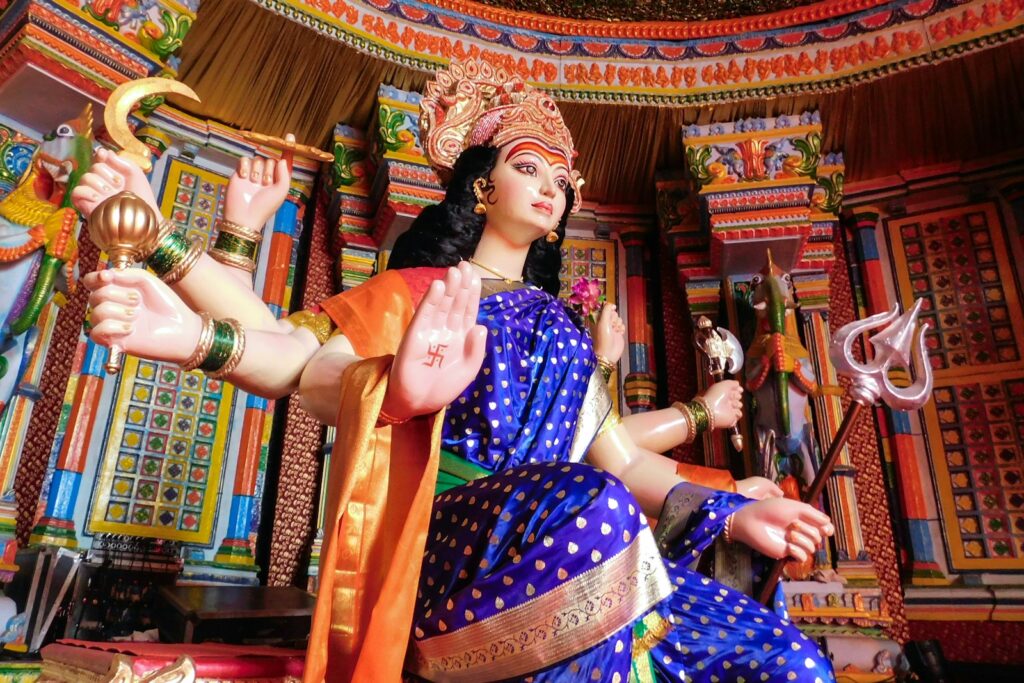
Historical Background of Durbar Square
Kathmandu Durbar Square, located within the Kathmandu Valley in Nepal, is a UNESCO World Heritage Site and holds great historical significance. This square has been an important site for centuries, witnessing various events, rituals, and ceremonies.
The history of Durbar Square dates back to the Licchavi period when two towns met and traded in Kasthamandap, which eventually grew into a city. As a wealthy royal valley, the kings chose this location as their base, making it a royal area. The word “Durbar” originates from the old Persian name meaning palace, reflecting the influence of the Mughal rule in India at that time.
Durbar Square was once a part of Nepal’s Royal Palace until 1896. The square is home to several buildings that are over a thousand years old, with many others dating back to the 15th and 16th centuries. Some of these structures were built on top of older buildings from the 7th century, creating layers of history and culture.
Over the years, Durbar Square has witnessed significant events and architectural transformations. It suffered considerable damage during the massive earthquake in 1934 but was promptly restored to its former glory. However, the 2015 earthquake posed a new challenge, and the ongoing renovation efforts have not yet reached their full potential.
Despite the challenges, Kathmandu Durbar Square remains a symbol of Nepal’s rich history, cultural heritage, religion, sovereignty, and economic importance. It continues to be a focal point for various religious ceremonies, including those of the Kathmandu Kumari – the living goddess. The square’s temples and intricate carvings on the roof struts, some depicting scenes of erotic art, add to its architectural and artistic significance.
As a treasure trove of history and culture, Kathmandu Durbar Square stands as a testament to the resilience and pride of Nepal. It is not just a historical monument but also a source of national admiration and a legacy to be cherished by future generations. It is essential for the authorities to prioritize its preservation and take necessary steps to ensure its continued significance and grandeur.
Major Temples and Palaces
Taleju Temple: A Sacred and Revered Shrine in Kathmandu Durbar Square
Nestled within the sacred premises of Kathmandu Durbar Square, the Taleju Temple stands as a testament to the rich cultural heritage of Nepal. Built in the 14th century by the Malla dynasty, this majestic temple is dedicated to the revered Hindu deity, Taleju Bhawani.
The Taleju Temple is a sight to behold, with its exquisite architectural design and intricate craftsmanship. Constructed in 1564, it showcases the artistic brilliance of the Malla artisans who meticulously brought this temple to life. Its grandeur and sanctity have made it one of the most revered religious sites in Nepal.
Located within Trishul Chowk, an extension of the renowned Hanuman Dhoka Palace, the Taleju Temple holds immense religious significance. It is believed that only Hindus are granted access to the temple, and that too, only on the auspicious ninth day of the Dashain festival. During this time, devotees flock to the temple to offer prayers and seek blessings from the deity.
The Taleju Temple is not only a spiritual sanctuary but also a cultural treasure. Its architectural style reflects the artistic influences of the Malla period, characterized by intricate carvings and delicate details. The temple’s three-tiered pagoda structure stands tall, symbolizing the harmonious blend of religious devotion and architectural brilliance.
As you approach the Taleju Temple, you will be greeted by its ornate entrance, adorned with traditional symbols and motifs. The temple’s interior is equally captivating, with its sanctum housing the idol of Taleju Bhawani. The tranquil ambiance and the aroma of incense create a serene atmosphere, inviting visitors to immerse themselves in a spiritual experience.
Shiva-Parvati Temple: A Divine Beacon of Spirituality
One of the most revered and significant temples in the heart of Durbar Square, the Shiva-Parvati Temple stands as a beacon of spirituality in the bustling city of Kathmandu. Dedicated to Lord Shiva, the deity of dissolution, and his eternal consort, Goddess Parvati, this divine temple attracts devotees from far and wide.
As you approach the temple, you are greeted by a grand entrance flanked by majestic stone lions, symbolizing protection and strength. The intricate craftsmanship of the temple is immediately apparent, with every inch of its walls adorned with immensely intricate carvings. It is a testament to the devotion and skill of the artisans who crafted this architectural marvel.
At the heart of the temple, a beautifully crafted statue showcases Lord Shiva and Goddess Parvati in harmonious union. This depiction of their divine love and partnership serves as a reminder of the power of unity and balance in our own lives. As you stand in front of this statue, you can’t help but feel a sense of peace and serenity wash over you.
Throughout the year, the Shiva-Parvati Temple witnesses a surge of devotees, particularly during the vibrant Teej festival and every Monday. These occasions reflect the deep-rooted significance of Lord Shiva and Goddess Parvati in the hearts of the Hindu populace. It is during these times that the temple truly comes alive with devotion and celebration.
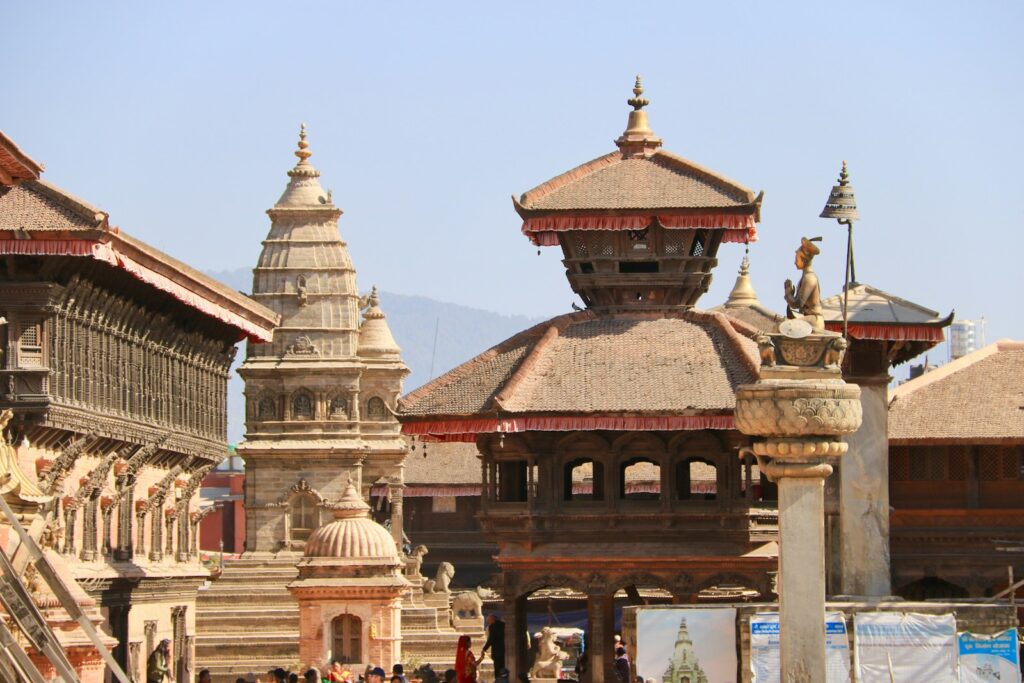
Krishna Temple: A Sacred Tribute to Lord Krishna
The Krishna Temple, located in Durbar Square in Kathmandu, is a majestic structure that stands as a testament to devotion and architectural brilliance. Constructed under the rule of the revered Pratap Malla, this octagonal temple is solely devoted to Lord Krishna, one of the most beloved Hindu deities.
The Krishna Temple is not merely a place of worship but also a symbol of reverence and tribute to two late rulers. Its stunning architecture and intricate designs captivate visitors, taking them on a journey through history and spirituality. The temple’s strong architectural similarities to the Krishna temple in Patan further highlight its significance in the cultural heritage of Nepal.
As you enter the Krishna Temple, you are greeted by beautiful pictures of Lord Krishna and two goddesses believed to be his spouses adorning the walls. These vibrant and detailed depictions add to the charm and ambiance of the temple, creating a sacred space for devotees and visitors alike.
Inside the temple, amidst the sanctum dedicated to Lord Krishna, lies a sanctum for the Kumari, the Living Goddess in Nepal. The presence of the Kumari within the temple adds an aura of mysticism and divine energy. It is believed that her blessings bring good fortune and prosperity to all who visit.
The Krishna Temple is not only a place of worship but also a cultural and historical treasure. It serves as a reminder of the rich traditions and religious practices of Nepal. The temple’s architectural grandeur and intricate metalwork elevate its charm, making it a must-visit destination for spiritual seekers and art enthusiasts.
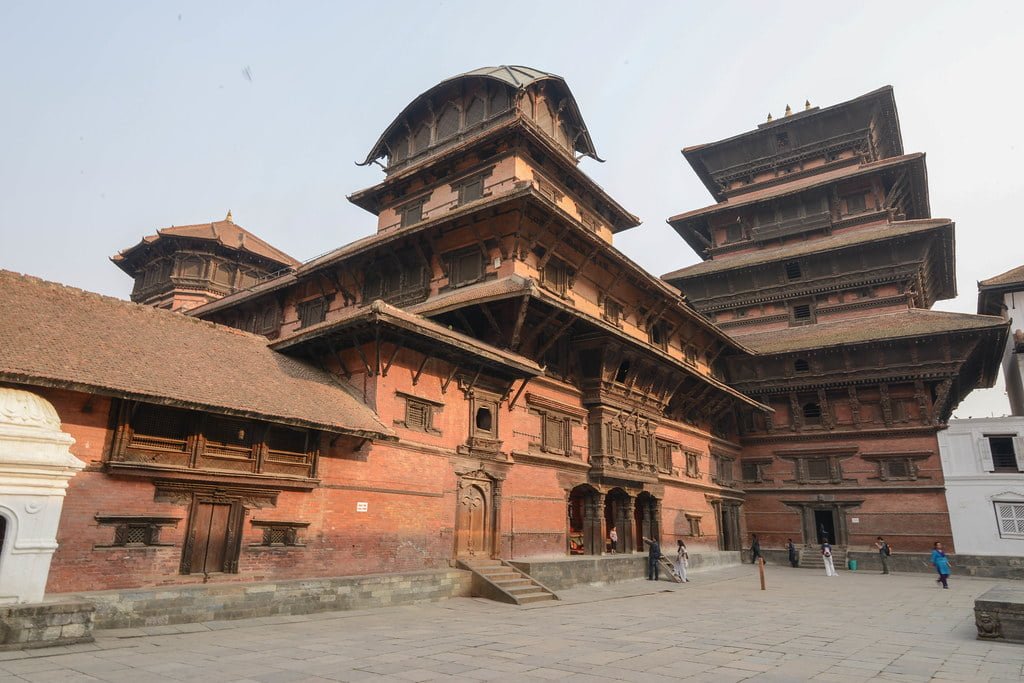
Hanuman Dhoka Palace: A Glimpse into Kathmandu’s Rich History
Located in the heart of Kathmandu’s city center, Hanuman Dhoka Palace, also known as Kathmandu Durbar Square, is a historic durbar square that never fails to captivate visitors with its intricate wood carvings and cultural heritage. With its rich history and architectural splendor, Hanuman Dhoka Palace offers a glimpse into the glorious past of Nepal.
Originally built during the Licchavi period, which dates back to the 4th to 8th centuries AD, Hanuman Dhoka Palace has been extended and renovated throughout the centuries. King Pratap Malla significantly expanded the palace in the 17th century, adding to its grandeur and making it an important center of power and governance.
The palace complex encompasses a vast area and is home to numerous palaces, courtyards, and temples. It is often referred to as “the Museum of Temples” due to its collection of over 50 temples within the square. These temples showcase the unique and diverse architectural styles of different eras, from the Licchavi to the Malla period.
One of the notable features of Hanuman Dhoka Palace is Nasal Chowk, a triangular courtyard that holds tales of bygone eras. The edifices surrounding Nasal Chowk primarily belong to the Shah dynasty, while the exquisite sculptures are remnants of the Malla period. In this courtyard, visitors can also find the modest shrine of Nasaleshwar, which adds to the spiritual ambiance of the place.
Another remarkable structure within the palace complex is the Basantapur Tower, also known as the Nine-story Palace. This tower stands as a testament to authentic Nepalese craftsmanship and sets a stylistic benchmark with its timeless design. Its aesthetic allure is matched by the historical significance it holds, inspiring generations with its architectural grandeur.
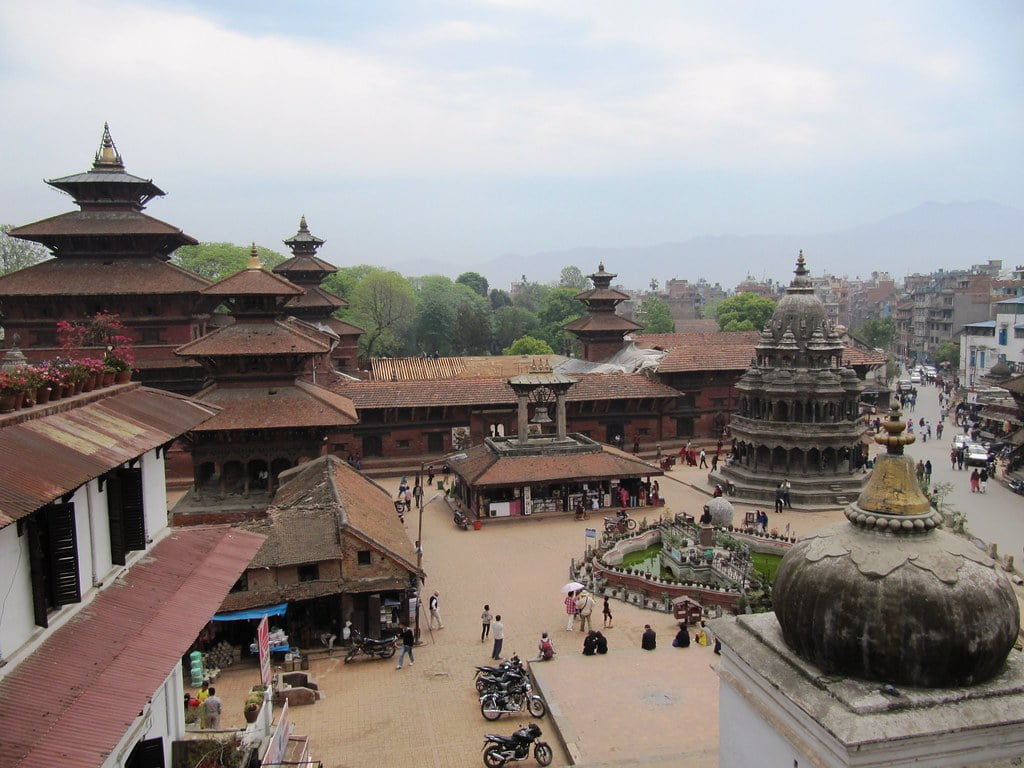
Patan Palace: A Symbol of Cultural Resilience and Community Identity
Patan Palace, located within the iconic Patan Durbar Square, holds immense significance for the community in Nepal. As a UNESCO World Heritage site, it stands as a testament to the rich cultural and architectural heritage of the Kathmandu Valley. The palace complex, with its intricately carved temples, courtyards, and statues, showcases the exceptional artistry of the Newari people and reflects the religious diversity that thrives in the region.
However, the devastating Kathmandu Valley earthquake in 2015 dealt a severe blow to this historical treasure. Many of the buildings in Patan Durbar Square, including Patan Palace, suffered significant damage. The community faced the challenge of restoring and preserving their beloved heritage.
In this endeavor, the US Ambassadors Fund for Cultural Preservation joined hands with the Kathmandu Valley Preservation Trust to support restoration projects. Working tirelessly, they have been able to revive the glory of Patan Palace and other structures in the square. The collaboration between international organizations and the local community exemplifies the shared commitment to safeguarding cultural heritage.
In 2022, as part of the U.S. Community Heritage Exchange Initiative, CyArk, a non-profit organization specializing in digital preservation, played a crucial role in documenting Patan Palace. Ten community members participated in 3D documentation and storytelling workshops, where they worked alongside CyArk to capture the essence of the Sundari Chowk within the palace.
Through the use of advanced technology and storytelling techniques, the trainees developed a virtual tour of Patan Palace. This tour not only showcases the stunning 3D modeling of the palace but also includes engaging narratives, personal experiences, and interviews with other community members. It serves as a platform to share the significance of the site and the stories of the people who hold it dear.
Devastating Earthquake and Restoration Efforts
Kathmandu Durbar Square suffered significant damage during the 2015 earthquake, but restoration efforts are ongoing to preserve its cultural and historical significance. The history of Kathmandu Durbar Square is marred by the devastating earthquake that struck Nepal. This powerful earthquake caused widespread destruction, and many of the surrounding buildings in the square were reduced to ruins. The magnificent Vatsala Devi temple, famous for its sandstone walls and gold-topped pagodas, was also claimed by the earthquake.
However, despite the immense loss, the people of Nepal showed incredible resilience and determination to rebuild their beloved square. Reconstruction efforts were visible during visits to the square, evidence of the ongoing restoration work that has taken place.
The restoration of Kathmandu Durbar Square is an ongoing project, as the city continues to rebuild and rejuvenate the historical structures that were damaged or destroyed. The efforts are not only focused on restoring the physical structures but also preserving the cultural and historical significance of the square.
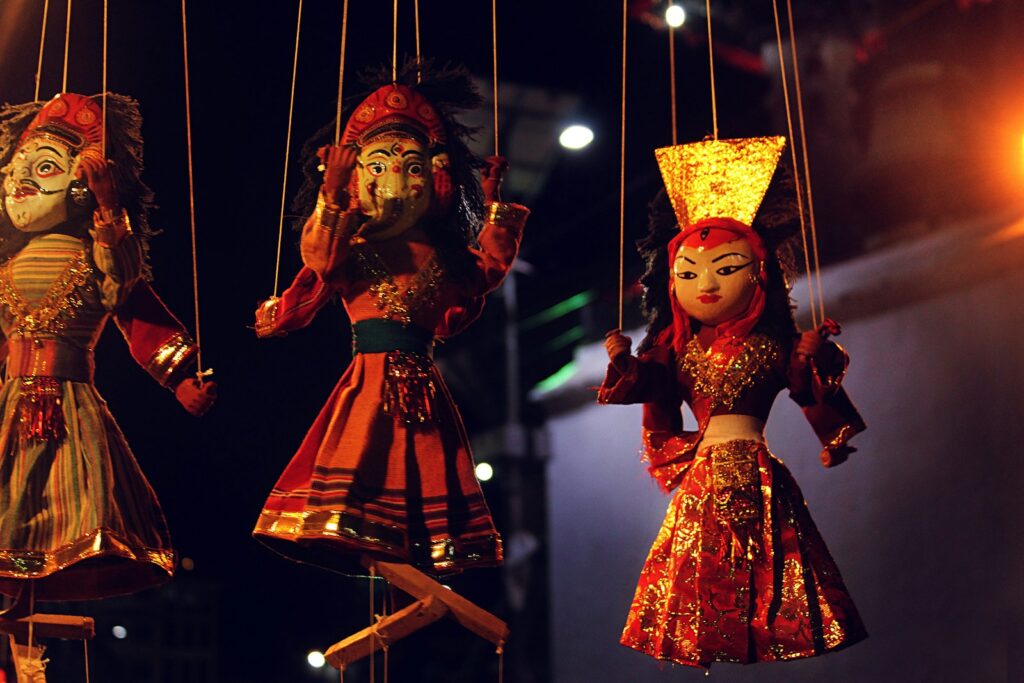
Attractions and Festivals
Kumari Bahal
One of the most captivating attractions in Kathmandu Durbar Square is Kumari Bahal, the palace where the Kumari lives while she is the chosen Devi. This ancient palace is a three-story structure made of wood and red bricks. Its intricate carvings on the windows, doors, and balconies resemble the architectural style of a Buddhist Vihara. Built in the mid-1700s by Jaya Prakash Malla, Kumari Bahal is not only a beautiful palace but also holds immense historical and cultural significance.
Kumari Bahal houses a stupa adorned with symbols of Goddess Saraswati, further emphasizing the religious importance of the palace. Additionally, a huge chariot used to take the Kumari around the city during religious festivities can be found within its premises. The Kumari, a young girl worshipped as the living embodiment of the Hindu Goddess Durga, resides in Kumari Bahal accompanied by her guardian priestesses.
Visitors to Kumari Bahal are often greeted with glimpses of the Kumari, although her appearances are infrequent. The primary exception is during religious festivals like Indra Jatra, which typically takes place in August or September. During this grand festival, the Kumari is paraded across the main streets of Kathmandu, seated on a magnificent chariot. The procession, witnessed by both locals and tourists, becomes a truly mesmerizing experience that captivates the hearts of all who witness it.
The Kumari herself is a symbol of divine power and carries a deep spiritual meaning in Nepali culture. Her presence in Kumari Bahal adds to the historical and cultural significance of this ancient palace. The combination of architectural beauty, religious symbolism, and the Kumari’s presence make Kumari Bahal a must-visit attraction in Kathmandu Durbar Square.
Despite the devastating earthquake in 2015 that severely damaged several buildings in Kathmandu Durbar Square, including Kumari Bahal, restoration efforts have been underway to preserve and revive this historical site. Today, visitors can once again marvel at the intricate craftsmanship of Kumari Bahal and witness the age-old traditions and festivals associated with the Kumari.
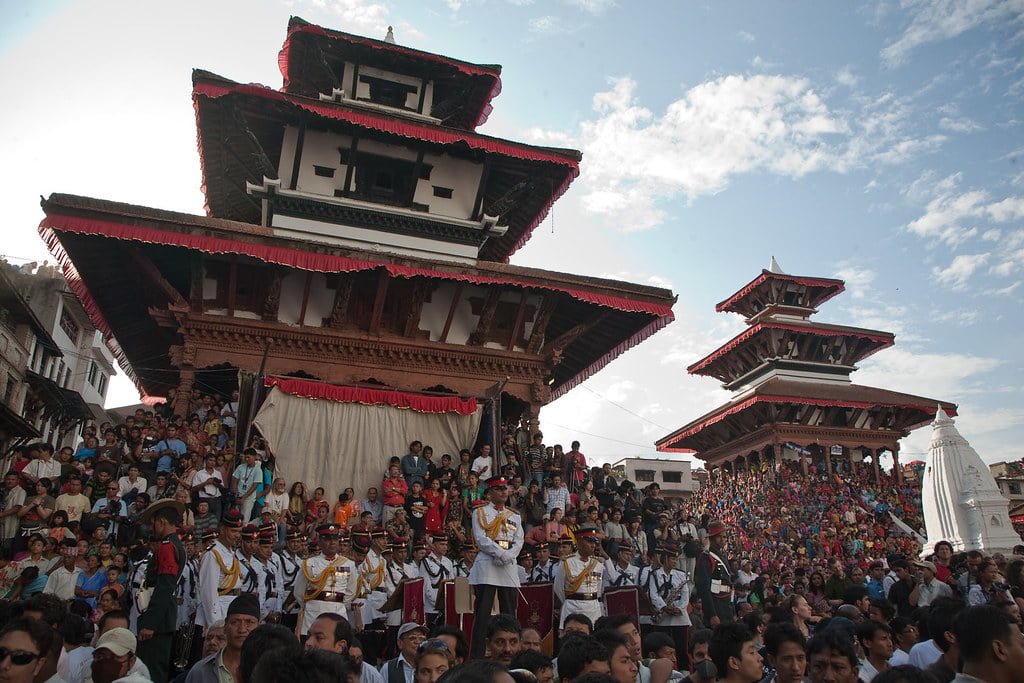
Indra Jatra
Indra Jatra is a vibrant and grand festival celebrated annually in the city of Kathmandu, Nepal. This festival holds great significance for the locals as it not only commemorates the harvest season but also pays tribute to the Kumari, the Living Goddess of Nepal.
During Indra Jatra, the Kumari, believed to be the earthly manifestation of the goddess Taleju, takes center stage. The Kumari, who resides in the Kumari Ghar within Kathmandu Durbar Square, graces her devotees with occasional appearances throughout the year. However, during the Indra Jatra festival, she is paraded across the city’s main streets, seated on a majestic chariot, capturing the hearts of all who witness the procession.
The festivities of Indra Jatra are filled with a vibrant display of cultural dances, music, and performances. The streets come alive with the beats of drums, the sound of trumpets, and the joyous cheers of the crowd. In addition to the Kumari’s chariot, the procession includes various traditional dances performed by masked dancers known as “Lakhe” and “Pulukisi.” These dances, accompanied by traditional music, add a mesmerizing touch to the festival.
Indra Jatra is a time of immense joy and celebration for the people of Kathmandu. It brings together locals and tourists alike, creating a sense of unity and shared cultural heritage. The festival not only serves as a platform to celebrate the Kumari but also honors the cultural traditions and history of the city.
The Kumari, being the chosen Devi, holds a special place in the hearts of the locals. Her presence is believed to protect the community and the region. The Kumari Ghar, where she resides, is a magnificent three-story palace with intricately carved windows, doors, and balconies. Built in the mid-1700s by Jaya Prakash Malla, it is a testament to the rich architectural heritage of Nepal.
The power and grace of the Kumari are often cited as a reason for the resilience of the Kumari Ghar. Even the devastating earthquake of 2015, which caused major damage to the surrounding area, left only minor damage to the Kumari Ghar. This is seen as a sign of the Kumari’s protection and the divine grace she bestows upon the community.
Indra Jatra is not just a festival; it is a celebration of the spirit of Kathmandu. It reminds the people of their cultural roots, their shared history, and their resilience in the face of adversity. The festival serves as a reminder of the importance of preserving and honoring the traditions and heritage that define the city.
For those fortunate enough to witness the grandeur of Indra Jatra, it becomes a cherished memory. The vibrant colors, the rhythmic dances, and the enchanting presence of the Kumari create an experience that lingers in the hearts of all who participate.

